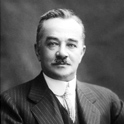Welcome to your home for the next three days,” Alicia Juanpere said as I entered Catacurian, her cooking school and guesthouse in this speck of a town in the vineyard-rich Priorat region, two hours southwest of Barcelona. The house, once owned by Alicia’s grandparents, strikes a beautiful balance between tradition and modern comfort. What was once the indoor stable is now a cozy cantina (bar) for guests, across from the sleek kitchen, where her grandmother’s old clay pots hang suspended. The charismatic Alicia, a former dancer, is an adept and natural cook, steeped in the lore and love of Catalan cuisine.
Our days began with fresh-squeezed tangerine juice and creamy yogurt drizzled with honey and hazelnuts, followed by an excursion—one day we toured neighboring wineries, on another we took a tour of a 12th-century monastery. In the early afternoon, we set to work preparing lunch—tortilla española, bacallà a la llauna (oven-baked cod with pequillo peppers and pimentón), and amanida tebia (a warm salad of escarole and spring onions with a Sherry vinaigrette). After a siesta, we were back in the kitchen to get going on dinner, but not before downing an icy glass of Cava to brace ourselves for the work ahead. Alicia introduced us to the four sauces that are the foundation for most Catalan dishes: picada (pounded nuts and aromatics), romesco (dried-pepper paste), samfaina (a ratatouille-like mixture), and the most important of all, sofregit (onions and garlic). We worked side by side making fricandó, a veal-and-mushroom stew; suquet de peix, a savory fish stew; paella mixta; and crema catalana, the Spanish equivalent of crème brûlée. Alicia’s gentle German shepherd, Doo Bop (named after a Miles Davis album), accompanied us each evening to the dinner table, cast in the glow of the wood-burning stove, where we laughed, talked, and sipped wines from local vineyards—Clos de l’Obac, La Conreria d’Scala Dei, and Capçances, to name but a few. (catacurian.net; or book through The International Kitchen; 312-467-0560; theinternationalkitchen.com; $1,700 for three days, $3,000 for six, including accommodations, meals, and excursions)
What I Learned
Mastering sofregit is crucial—and tricky. The key is lightly frying the ingredients in oil without burning them.
Biggest Surprise
There are only a few staples in most Catalan dishes—olive oil (lots of it), garlic (lots of that, too), parsley, and often tomatoes. Get a handle on their uses and the secrets of the cuisine—from a simple clam dish to the more complex fricandó—will be yours.
Before You Go
This course is relaxed, yes, but there is absolutely no free time. You will need that siesta.
Recipe
Web-exclusive Catalan Seafood Stew



 Pinterest
Pinterest






